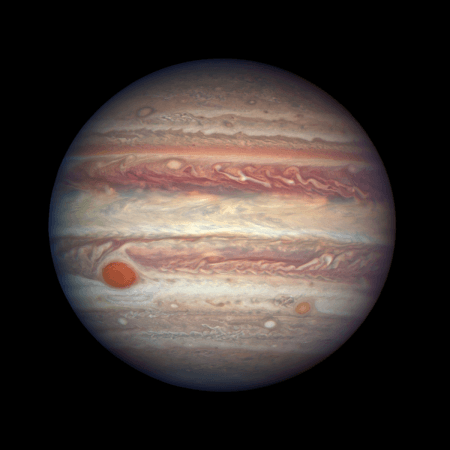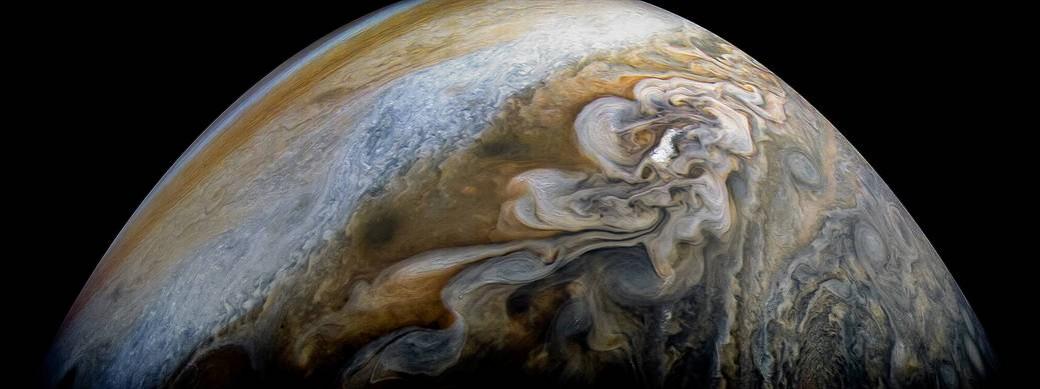
Scientists claim to have finally figured out exactly why Jupiter has so many horizontal "bands" through a new study that dived deep into how the gas giant's magnetic fields interacted with its atmosphere.
Jupiter is a gas giant, the largest planet in the Solar System, and as of now astronomers are yet to find out if the planet has a rocky or a metallic core. What is known right now is that the planet does not have a solid surface upon which the massive atmosphere of the planet resides. It is mostly composed of gases, made up mostly of hydrogen and helium.
Strong streams flow from west to east in the Jovian atmosphere and according to a study by the scientists, they are similar to Earth's own jet streams. Unlike Earth's atmosphere where a majority is Nitrogen and Oxygen, Jupiter's outer atmosphere has a lot of ammonia and it is carried along by powerful jet streams. They make up the immediately identifiable coloured bands. The bands range in colour from shades of white, to yellow, orange, red and brown.
Navid Constantinou of the ANU Research School of Earth Sciences, one of the researchers on the study, pointed out that little was known about what happened below Jupiter's clouds, till recently. "We know a lot about the jet streams in Earth's atmosphere and the key role they play in the weather and climate, but we still have a lot to learn about Jupiter's atmosphere," he said.

There has been much debate in the scientific community about how deep these streams reach beneath the surfaces of Jupiter as well as other gas giants. Another important question is why they do not appear in the sun's interior.
NASA's Juno found that these jet streams go as far as 3,000 kilometres below Jupiter's clouds.
Jeffrey Parker from Livermore National Laboratory who was also involved in this study said that their theory showed that these jet streams were held down by Jupiter's strong magnetic field.
Jupiter's interior gases are magnetised, so, "we think our new theory explains why the jet streams go as deep as they do under the gas giant's surface but don't go any deeper," said Parker. Polar, subtropical jet streams in Earth's atmosphere are responsible for the climate, notes the researchers, especially in regions like Australia, Europe and North America.
Earth's jet streams are known to be wavy and irregular, Jupiter's streams are straight and regular. That is because, there is no geography, no land features like mountains and large landmasses to obstruct and modify the flow of atmospheric jet streams in Jupiter.

This is what makes jet streams on Jupiter simple and straight cut. "By studying Jupiter, not only do we unravel the mysteries in the interior of the gas giant, but we can also use Jupiter as a laboratory for studying how atmospheric flows work in general," said Constantinou.
The study was first published in The Astrophysical Journal.














